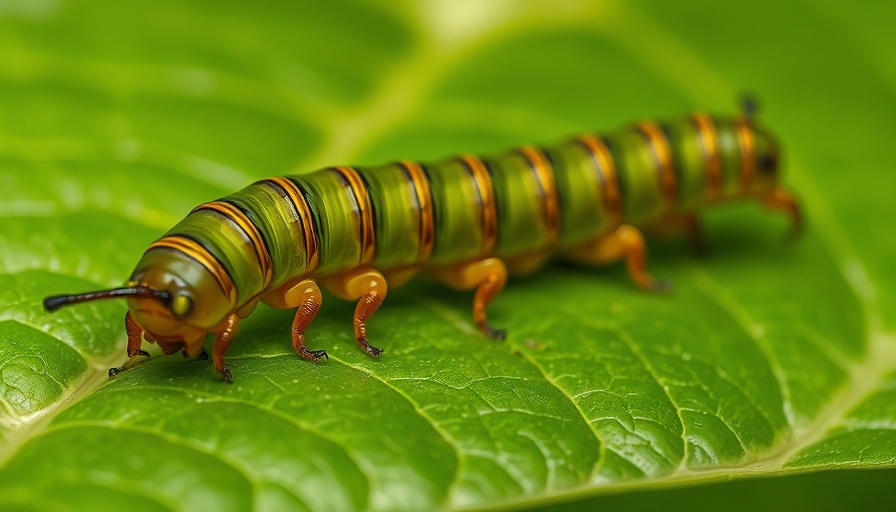
Understanding Armyworms: The Garden Menace
If you’ve ever seen clusters of caterpillars in your garden, you’ve likely encountered armyworms—an invasive species known for their destructive feeding habits. From young plants to established grasses, these voracious larvae can wreak havoc on your garden in no time.
Identifying Armyworms: What to Look For
Armyworm species like Spodoptera frugiperda (fall armyworm) and Mythimna unipuncta inhabit various regions and can be recognized by their chunky bodies and specific colorations. Fall armyworms, common throughout eastern North America, are brown with striped patterns and can grow as long as 1.5 inches. In your garden, look for these typical signs of infestation:
- Groupings of larvae that appear to be 'marching' across grass or other plants.
- Areas of your lawn turning brown, which may indicate grass has been devoured.
- Visible frass (powdery waste) scattered beneath plants.
The Lifecycle of Armyworms: Key Insights
Additionally, armyworms undergo a fascinating lifecycle. Starting from the egg stage, they hatch into larvae that feed voraciously, pupate, and then emerge as adult moths, ready to continue the cycle. Understanding this lifecycle helps gardeners know when to act against these pests, especially during warmer months when armyworm activity peaks.
Effective Organic Control Methods
Fortunately, several organic gardening strategies exist to manage armyworm populations. Here are some methods to consider:
- Natural Predators: Encourage beneficial insects like ladybugs and lacewings, which feed on armyworm larvae.
- Neem Oil: An organic compound that disrupts the growth and feeding of armyworms.
- Spinosad: A natural insecticide derived from soil-dwelling bacteria, effective at managing caterpillars.
Physical Barriers: A Proactive Approach
Using physical barriers can also help protect your plants. Consider installing row covers or garden netting to keep adult moths from laying eggs in your garden. Frequent monitoring is crucial for early detection and successful management of potential outbreaks.
Cultural Practices That Make a Difference
Cultural control practices can deter armyworms and enhance your garden's overall resilience. Here are some strategies:
- Crop Rotation: Changing where you plant certain crops each year can reduce armyworm survival rates.
- Avoid Overcrowding: Give your plants proper spacing to improve air circulation and reduce humidity, creating an unwelcoming environment for pests.
- Regular Maintenance: Healthy plants can resist pests better, so ensure consistent watering, fertilizing, and mulching.
Conclusion: A Resilient Garden Awaits
Armyworms might pose a significant threat to your garden, but with vigilance and proactive strategies, you can manage their populations and protect your beloved plants. From organic pesticides to cultural practices, utilizing a multifaceted approach ensures a thriving garden year-round.
Your garden deserves the best care possible. Explore sustainable techniques and engage with fellow gardeners to share insights on protecting against pests. Join a local gardening forum or community group today!
 Add Row
Add Row  Add
Add 




Write A Comment